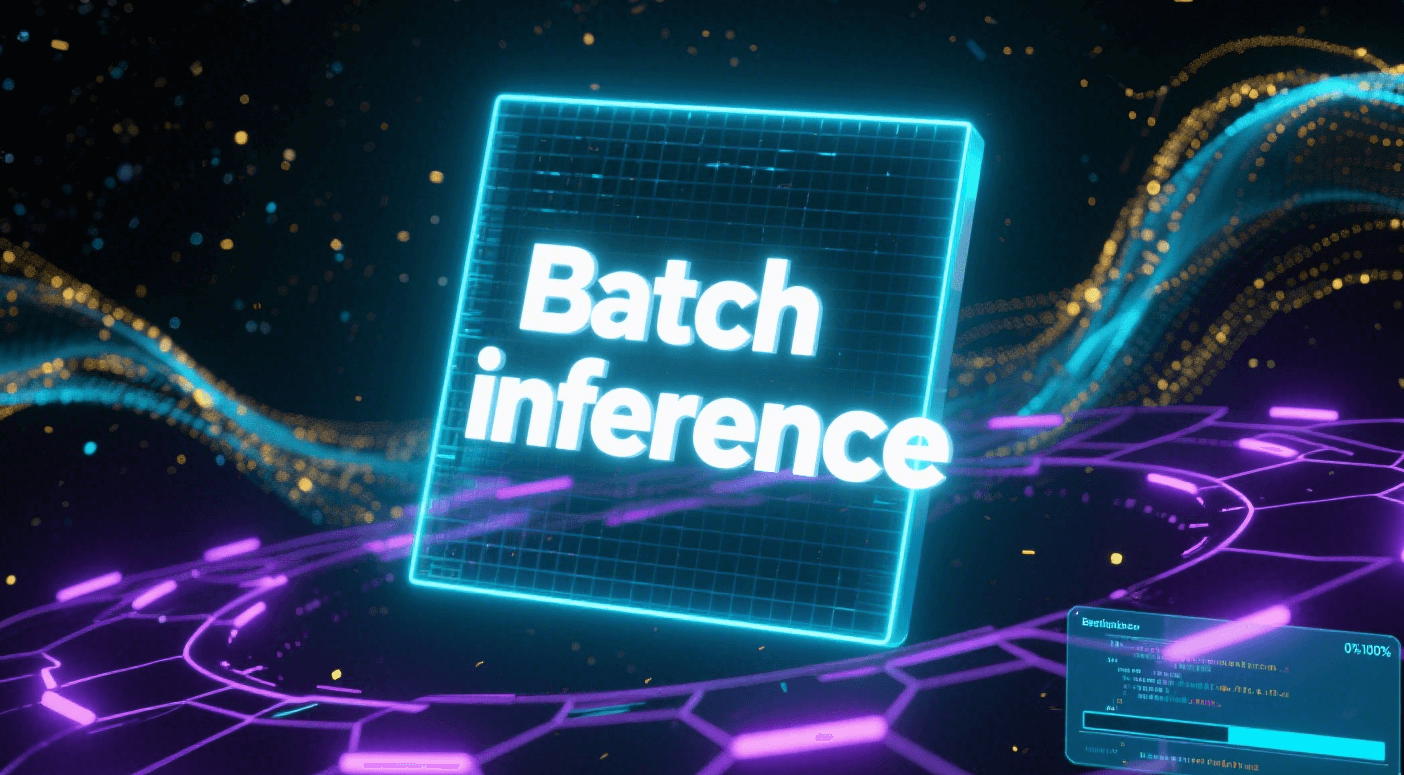What is Batch Inference?
Batch Inference means processing multiple input requests at the same time using a pre-trained AI model. It does not handle each request one by one. Online inference focuses on low latency to get real-time responses. But batch inference is different. It works best in situations where latency isn’t a big concern. Instead, it prioritizes throughput and making the most of resources.
In traditional single-request inference, each input is processed alone. This leads to hardware accelerators like GPUs being underused. These accelerators are made for parallel processing. They work best with many tasks at once. Batch inference uses this parallelism. It groups hundreds or even thousands of inputs into a “batch.” This lets the model process all samples in one go through the network. The benefits are clear: it cuts down total computation time. It also reduces the extra work caused by repeatedly initializing the model and loading data.
Key Advantages of Batch Inference
Improved Computational Efficiency
By maximizing GPU/TPU utilization, batch inference reduces the per-sample processing cost. For example, a model processing 1000 samples in a single batch may take only 10% more time than processing one sample alone, leading to a 10x efficiency gain.
Reduced Infrastructure Costs
Higher throughput per hardware unit means fewer servers are needed to handle the same workload, lowering capital and operational expenses.
Simplified Resource Management
Batch jobs can be scheduled during off-peak hours when computing resources are underutilized, balancing load across data centers.
Consistent Performance
Processing batches in controlled environments (e.g., during non-peak times) reduces variability in latency caused by resource contention.
How Batch Inference Works
- Data Collection: Input requests are aggregated over a period (e.g., minutes or hours) or until a predefined batch size is reached.
- Batch Processing: The accumulated data is formatted into a tensor (a multi-dimensional array) compatible with the model’s input layer. The model processes the entire batch in parallel, leveraging vectorized operations supported by modern hardware.
- Result Distribution: Once inference is complete, outputs are mapped back to their original requests and delivered to end-users or stored for further analysis.
VLLM and Advanced Batch Inference Techniques
While traditional batch inference improves efficiency, it struggles with dynamic workloads where request sizes and arrival times vary. This is where frameworks like VLLM (Very Large Language Model) Engine come into play, introducing innovations such as continuous batching.
VLLM Continuous Batching
Traditional static batching uses fixed-size batches. This leads to idle resources when requests finish processing at different times—like a short sentence vs. a long paragraph in NLP, for example.VLLM continuous batching (also called dynamic batching) fixes this. It adds new requests to the batch right away as soon as slots open up.
Take an example: if a batch has 8 requests and 3 finish early, continuous batching immediately fills those slots with new incoming requests. This keeps the GPU fully used. For large language models like LLaMA or GPT-2, it can boost throughput by up to 10 times compared to static batching.
VLLM Batch Size
The VLLM batch size refers to the maximum number of requests that can be processed in parallel at any given time. Unlike static batch size, which is fixed, VLLM’s dynamic batch size adapts to factors such as:
- Request Length: Longer inputs (e.g., 1000 tokens) require more memory, reducing the optimal batch size.
- Hardware Constraints: GPUs with larger VRAM (e.g., A100 80GB) support larger batch sizes than those with smaller memory (e.g., T4 16GB).
- Latency Requirements: Increasing batch size improves throughput but may slightly increase latency for individual requests.
VLLM automatically tunes the batch size to balance these factors, ensuring optimal performance without manual intervention. Users can set upper limits (e.g., –max-batch-size 256) to align with their latency budgets.
Optimizing Batch Inference Performance
To maximize the benefits of batch inference, consider the following best practices:
- Tune Batch Size: Larger batches improve GPU utilization but increase memory usage. For VLLM, start with a max-batch-size of 64–128 and adjust based on hardware metrics (e.g., VRAM usage, throughput).
- Leverage Continuous Batching: For LLMs, enable VLLM’s continuous batching (–enable-continuous-batching) to handle dynamic workloads efficiently.
- Batch Similar Requests: Grouping requests with similar input sizes (e.g., all 256-token sentences) reduces padding overhead, as padding (adding dummy data to match lengths) wastes computation.
- Monitor and Adapt: Use tools like NVIDIA’s NVML or VLLM’s built-in metrics to track throughput (requests/second) and latency, adjusting parameters as workloads evolve.
Real-World Applications
Batch inference, especially with VLLM’s enhancements, powers critical AI applications across industries:
- Content Moderation: Social media platforms use batch inference to scan millions of posts overnight for harmful content.
- E-commerce Recommendations: Retailers process user behavior data in batches to update product suggestions daily.
- Healthcare Analytics: Hospitals batch-process medical images (e.g., X-rays) to identify anomalies during off-peak hours.
- LLM Serving: Companies deploying chatbots use VLLM’s continuous batching to handle fluctuating user queries efficiently.
Batch Inference is key for efficient AI deployment, letting organizations scale models affordably.
Advancements like VLLM’s continuous batching handle modern workloads, especially large language models. Batch inference balances throughput, latency and resources, cutting infrastructure costs. Tools like WhaleFlux support this—optimizing multi-GPU clusters to reduce cloud costs. WhaleFlux boosts LLM deployment efficiency for AI enterprises. As AI models grow, mastering batch inference stays critical for competitiveness.

